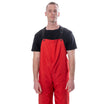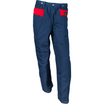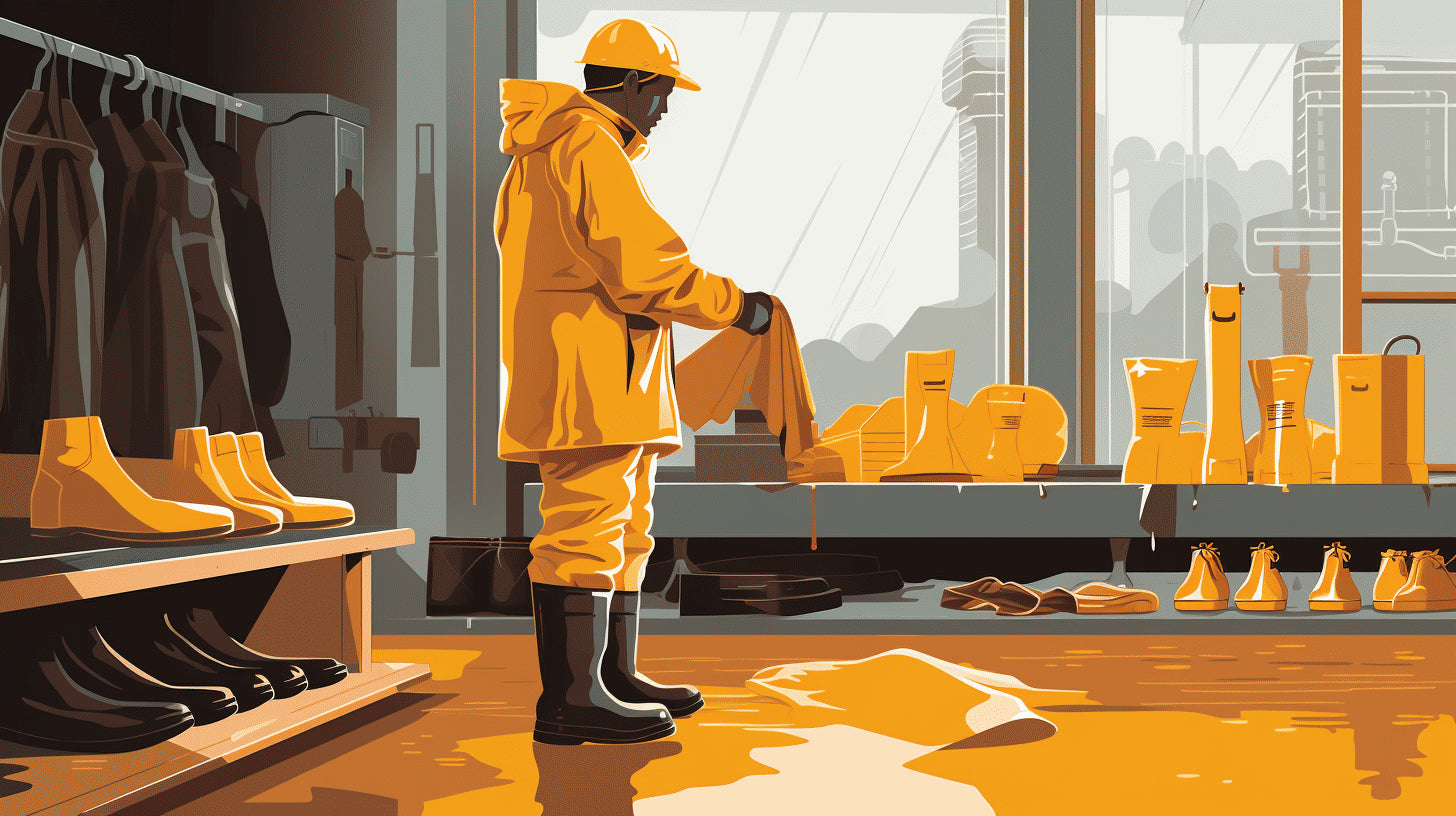Importance of Rain Gear for Construction Workers
In the life of a construction worker, inclement weather is more than just an inconvenience; it's an occupational hazard. Whether it’s a torrential downpour or a gentle drizzle, rain can greatly increase the risk of accidents on a construction site. And while safety should always be a top priority, it becomes even more critical when the skies open up. That's why equipping workers with the right rain gear has risen from a mere suggestion to an imperative necessity.
Construction Industry Fatalities
The construction industry is no stranger to accidents and fatalities. Data shows that construction is accountable for a staggering 21% of work-related deaths, with 20% of total employee fatalities in the U.S. occurring within the sector. Yet, paradoxically, construction workers make up only 4% of the total workforce. This stark disparity calls for urgent measures, especially when considering the added risks brought about by unpredictable weather conditions such as rain.
Preventing Accidents and Fatalities
The advent of proper rain gear in the construction industry has figuratively and literally been a lifesaver. When workers are equipped with waterproof clothing, rain boots, and other wet-weather gear, they can maintain a firm grip, stay warm, and increase their visibility. This lends a crucial edge in preventing slips, falls and other accidents that can lead to injuries and fatalities.
"There's no such thing as bad weather, only unsuitable clothing." ~ Alfred Wainwright
Let's face it; workers can't control the weather, but they can certainly control how they prepare for it. Every ounce of prevention is worth a pound of cure, and investing in quality rain gear is one of the simplest yet most effective strategies a company can implement to boost safety. Not only does it protect the workers physically, but it also has a profound impact on the workers' morale, as it reflects a company's concern for their welfare.
While avoiding work in poor weather conditions is always the safest choice, the construction industry often doesn't have this luxury, and having the proper rain gear can be the difference between a productive day and a disastrous one.
In the end, it all comes down to fostering a safety culture where every worker, come rain or shine, is equipped to weather any storm both literally and metaphorically. With the appropriate gear in place, construction workers can confidently perform their duties, knowing that their safety isn't just a priority, but a guarantee.
After all, the importance of a construction worker goes beyond the bricks and scaffolding; they play a vital role in shaping our world. And the very least we can do is ensure their safety as they erect the structures of our tomorrow.
Key Features of Effective Rain Gear
The climate is unpredictable and can change in the blink of an eye, causing inconvenience, especially for those who work outdoors like construction workers. Choosing the right kind of rain gear can turn a dreary, wet day into a productive one. There are key features that a person should look for when buying rain gear. Let's explore them together.
Waterproof Rating
The first thing that should be checked is a gear's waterproof rating. It is a crucial factor that determines how long it can keep net rainfall out. A waterproof rating of the rainwear fabric should ideally be at least 3,000mm or more. So, the higher the rating, the longer you'll stay dry.
High Visibility
Another vital factor to consider is visibility. High visibility rain gear is an absolute essential for construction workers to remain visible in dim lighting or poor weather conditions. This not only ensures their safety but also helps them to carry out their work without any hindrance.
Quality and Ventilation
While buying rain gear, quality is a feature that should never be compromised on. The gear should be high quality, well-constructed, and able to withstand the harshest of weather conditions. Additionally, it should be ventilated for long periods of wear. A breathable fabric can help to avoid the uncomfortable dampness associated with prolonged use in humid or wet conditions.
Durability and Water Resistance
Among many considerations, durability stands out as a factor that is often overlooked. Wet-weather gear should not just keep you dry but should also be strong enough to withstand the strains of frequent use and heavy showers. PVC rain gear, for instance, is known for its durability and water resistance, making it a good option for those braving the elements.
Variety of Rain Gear
Last but not least, consider the variety and adaptability of the gear to your specific needs. Do you need full-body protection, or would a jacket suffice? Work rain jackets, hoodies, shirts, pants, and overalls are just a few of the range of products available in the market that keep construction workers dry and mobile, providing them multiple options to choose from.
So, when choosing rain gear, keep these features in mind, and you'll find gear that not only serves its purpose of keeping you dry but also supports your work efficiency and safety. Remember, the right rain gear can make all the difference!
Important Factors to Consider
When deciding on the perfect rainwear to ensure worker safety and protection, particularly during the monsoon season, one can't simply choose the first option they come across. Rather, it entails careful consideration of a handful of vital factors. Among these, two particular features come at the forefront: breathability and moisture control, and the specific seasonal conditions at play.
Breathability and Moisture Control
The first key detail to consider when choosing rainwear is its capacity to promote breathability and manage moisture. Rainwear needs to safeguard you from external water, but what about the internal moisture generated by the body? That's where breathability and moisture control come in. These attributes refer to the gear's ability to enable air circulation and disperse internal moisture, thereby ensuring comfort and dryness.
Paying attention to the breathability and moisture control features can help mitigate common difficulties such as dampness, discomfort, sweat retention, and potential skin irritations. Looking for rainwear made from materials that offer these features will allow you to perform tasks with added confidence and comfort.
- Rainwear that ensures breathability allows air to flow, preventing stuffiness.
- Rain gear with optimal moisture control prevents sweat accumulation, minimizing discomfort and dampness.
- Selecting moisture-wicking materials can enhance user comfort and maintain healthy skin conditions.
Seasonal Considerations
The season during which the rainwear will be primarily used is another crucial factor to consider. For instance, during warmer conditions, unlined rain jackets and pants are a great pick. These attire options are lightweight and offer room for air circulation, thereby keeping the wearers cool.
On the other hand, in cooler temperatures, insulated rain jackets are a more suitable option. They ensure a two-fold protective layer - shielding the wearer from the rain, and providing insulation against the cold temperatures.
- Unlined rainwear offers breathability and lightweight comfort in hot, rainy conditions.
- Insulated rainwear provides dual protection - combating both rain and cold.
Identifying and prioritizing these factors can aide in the selection of rainwear that offers optimal protection, comfort, convenience, and safety for the wearer, regardless of the conditions they face. It isn't just about staying dry- the right rainwear can make the difference between seamless work execution and a day marred by discomfort and potential health risks. Make your choice count - because in this case, the right gear does matter!
Conclusion
Navigating outdoor work conditions is a tough task, especially amidst the unpredictability of extreme weather patterns. However, having the right protective gear, specifically rain gear, extends beyond basic comfort. It’s a matter of safety, efficiency, and the overall well-being of construction workers.
Rain gear for construction workers needs to be more than just waterproof; it needs to be breathable, riding the fine line between protection and comfort. It should be high visibility, for safety in low light conditions, and it needs to be sturdy, able to withstand the harsh weather and demanding conditions of a construction site.
At Hurricane Raingear, we understand these challenges. Offering a range of 100% waterproof and rip-resistant rain gear, handcrafted in the Pacific North West, our products are tailored to meet the unique needs of construction workers. From a waterproof rating to high visibility, quality, and ventilation, our gear is known for its durability and water resistance.
No matter what the job, or where it takes you, we ensure you stay dry, safe, and comfortable. Because come rain or shine, the work doesn't stop, and neither should you! So, gear up with Hurricane Raingear - because you can't control the weather, but you can definitely be ready for it.
We may not change the industry overnight, but with each step, with every gear we provide, we're making a difference - one happy, dry, and safe construction worker at a time.
Frequently Asked Questions
-
What types of rain gear are essential for construction workers?
Essential rain gear for construction workers includes waterproof jackets, pants, boots, and gloves. It's also recommended to have a rain hat or hood and a waterproof backpack or bag to protect important documents and tools.
-
How can waterproof jackets benefit construction workers in rainy conditions?
Waterproof jackets provide protection against rain and keep construction workers dry. They are made of waterproof materials that prevent water from seeping through and offer features like adjustable hoods, sealed seams, and reflective strips for visibility.
-
Why is it important for construction workers to have waterproof boots?
Waterproof boots are important for construction workers as they help keep their feet dry and prevent discomfort, blisters, and fungal infections. These boots often have slip-resistant soles, steel toes, and insulation for added safety and comfort.
-
What materials should rain gear for construction workers be made of?
Rain gear for construction workers should be made of waterproof and breathable materials like nylon or polyester coated with PVC or polyurethane. These materials repel water while allowing moisture and heat to escape, keeping workers comfortable.
-
How often should rain gear be inspected and replaced for construction workers?
Rain gear for construction workers should be regularly inspected for damage and wear. Depending on the amount of use and harshness of weather conditions, it's recommended to replace rain gear every 1-2 years or when signs of deterioration are evident.





















Leave a comment
This site is protected by hCaptcha and the hCaptcha Privacy Policy and Terms of Service apply.